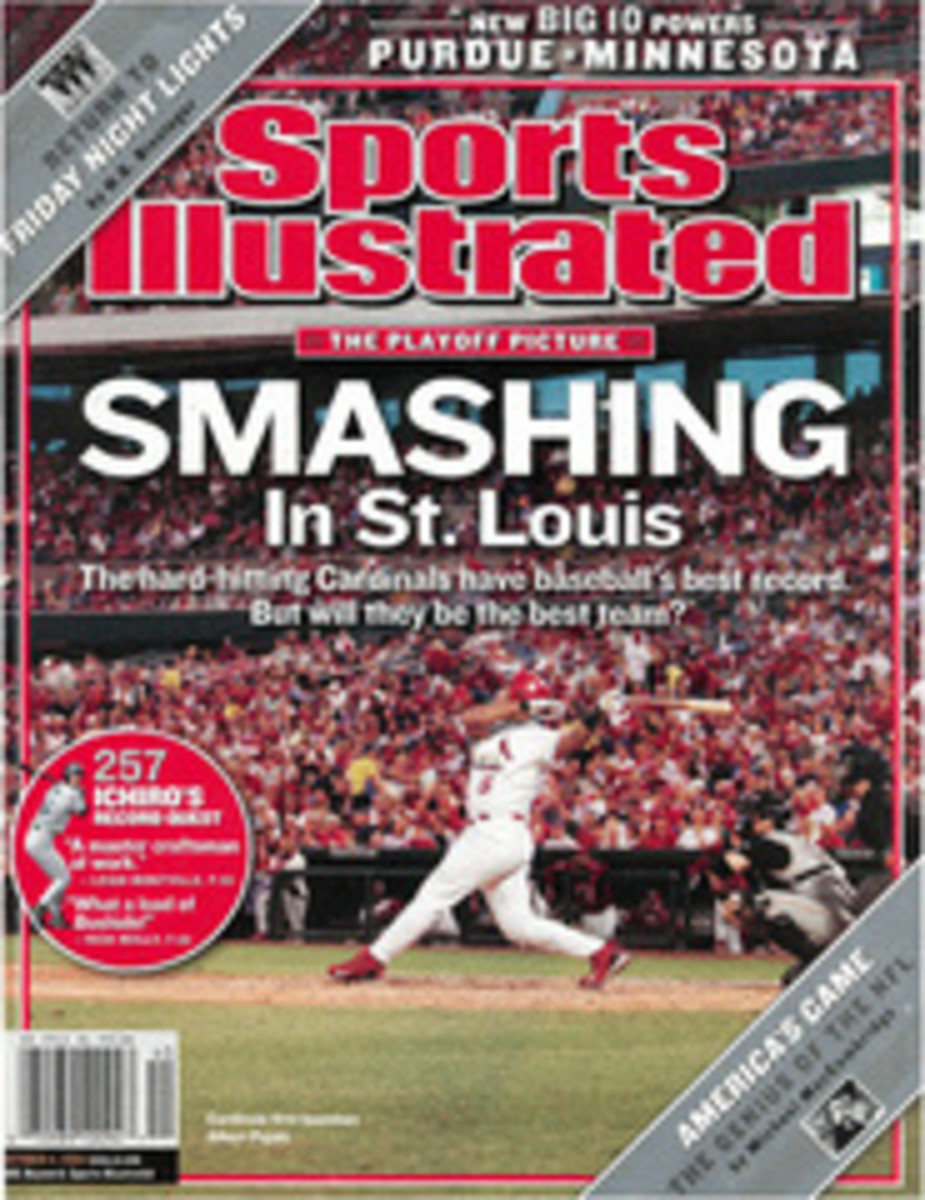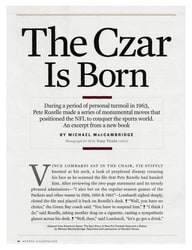
After the Gold Rush
Courtney McCool knew she was on perilous footing the moment she stepped into the spotlight to welcome her hometown fans to Kansas City's Kemper Arena on Sept. 21. The Rock & Roll Gymnastics Championships, a post-Olympic tour featuring such stars as Paul and Morgan Hamm, Blaine Wilson, Tasha Schwikert and former gold medalists Shannon Miller and Dominique Moceanu, had invited the 16-year-old McCool, who lives in nearby Lee's Summit, to participate. She wasn't being paid, because accepting money would have cost McCool, the youngest member of the silver-medal-winning 2004 U.S. women's team, her NCAA eligibility. Still, McCool had been warned by USA Gymnastics (USAG), her sport's domestic governing body, that if she appeared with the Rock & Roll tour, she'd be kicked off USAG's official T.J. Maxx Tour, a 40-city road show that includes a stop in Kansas City on Oct. 13.
"It's a total breach of contract," Brian Eaton, communications director for USAG, told The Kansas City Star. "Our contract says if you're doing our tour, you're not doing the other. She's going to have to choose one or the other." And if McCool chose the Rock & Roll tour? "Everybody is going to wonder what happened to Courtney."
Such heavy-handed pronouncements are earning USA Gymnastics (which did in fact remove McCool from the T.J. Maxx Tour) the reputation of putting profits ahead of the best interests of its athletes. "They threaten her when she's doing all those cities for free?" says Moceanu. "Good for Courtney for standing up to them. We can have two tours. The more tours, the better for our sport. It's too bad, but there's a lot of greed at the top of the game."
At a time when American gymnasts should be enjoying the fruits of a successful Athens Olympics, an ugly turf war has erupted between the USAG's tour and the Rock & Roll tour, a nonsanctioned show run by promoter Mike Burg. McCool isn't the only one caught in the crossfire. Other athletes reportedly have felt pressured by USAG president Bob Colarossi to sign with the T.J. Maxx Tour, even if they'd been offered more money by Burg. "We know for a fact there were people who were told if they went on the Rock & Roll tour, they could be pulled from the national team," says Mike Jacki, a member of the USAG board. "What's disappointing to me is the kids had to sign these contracts before the Olympic team was chosen." The Hamms were among those who refused to sign, and Sandy Hamm, their father, believes Colarossi's muted defense of Paul when he was badgered to return his all-around gold medal in Athens was an act of retribution--a charge Colarossi strongly denies.
Colarossi contends that Burg, who ran the post-Olympic tours for USAG after the 1992, '96 and 2000 Olympics, has no long-term ties to gymnastics and is interested only in profits. "Their tour doesn't put one cent back into the sport, except for paying the gymnasts," Colarossi says. "We're funding the future of our sport."
Counters Burg, "What we are interested in is creating a branded franchise similar to Stars on Ice in figure skating."
Colarossi admits that a post-world-championship tour put on by USAG in 2003 lost money. By licensing the tour to a professional promoter, USAG would have been guaranteed a profit while removing itself from charges of conflict of interest. "This is the first year [since 1992] USA Gymnastics has promoted a [post-Olympic] tour by themselves, and they've gone about it wrong," says Miller, who is an athlete representative to the USAG board in addition to being America's most decorated gymnast. "I don't agree with the athletes' being asked to sign something they don't believe in and the bad-mouthing of athletes for signing on one tour instead of the other. To have that coming down from the top of your governing body is just not right."
"The bottom line is, the kids have been held hostage," says Jacki, who served as executive director of USA Gymnastics from 1983 to '93. "USAG is Paul Hamm and Courtney McCool, not Bob Colarossi. When you tell a kid, 'You can't go to your hometown and wave to the audience during the show,' I don't get it."
Deflated Dreams
For some gymnastics medalists, the post-Olympic payday is not what it's been in the past
Why did Paul and Morgan Hamm choose to perform on the unlicensed, 13-show Rock & Roll Gymnastics tour rather than USA Gymnastics' T.J. Maxx event? "It has fewer stops for more money," says Paul, who like all the other Olympians was offered $1,800 per performance for the T.J. Maxx Tour (plus profit sharing if it turned a profit). That's $200 less per stop than U.S. gymnasts got for a post-Olympic tour in 1984. In the '96 post-Games showcase Shannon Miller got more than triple what all-around gold medalist Carly Patterson (inset) is being paid by USAG. "Everyone knows there could be ramifications for going on the Rock & Roll tour instead of [the USAG] tour," says Hamm, who's getting more than $7,500 per show. "It puts everyone in an awkward position." --E.M.S.
COLOR PHOTO
TIM & JOSH UMPHREY/TUSP (HAMMS)
BREAKING RANKS
Paul (left) and Morgan Hamm headline the unsanctioned Rock & Roll tour.
COLOR PHOTO
JIMMY COKER

